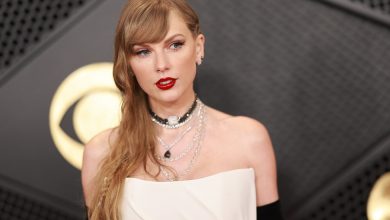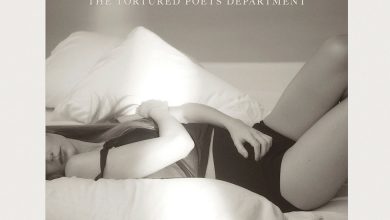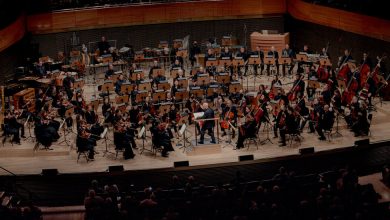A Historic Night as the Metropolitan Opera Tries to Ensure Its Future

After eight minutes of applause, the curtain had dropped for a final time, and many members of the cast of “Fire Shut Up in My Bones,” the first opera by a Black composer in the 138-history of the Metropolitan Opera, began to cry.
“This is crazy,” said Terence Blanchard, the composer, as he embraced singers, dancers and musicians backstage during opening night on Monday. “This is amazing.”
The Met was finally back, more than a year and a half after the pandemic had forced it to close — costing the company $150 million in revenues, prompting it to furlough most of its workers without pay and raising, once again, pressing questions about how opera can survive its latest challenges. It was during the long shutdown, as the nation confronted racial injustice with renewed urgency after the police killing of George Floyd, that the company switched gears and chose “Fire,” which had been slated for a later season, for the gala opening night that would mark its return to the opera house.
It was not only the long-overdue breaking of a racial barrier that made the choice of “Fire” notable: it was also the first time that the Met had opened a season with a work by a living composer since 1966, when it moved into its Lincoln Center home with Samuel Barber’s “Antony and Cleopatra.” But it fits very much with the strategy of Peter Gelb, the company’s general manager, who has been trying to attract new and more diverse audiences to offset the Met’s recent box-office declines and to revive interest in opera with new, buzzy productions — a need that grew more urgent with the pandemic.
“It’s all about keeping the art form alive,” Gelb said in an interview. “We’re firing on all cylinders right now trying to make opera accessible for the broadest number of people.”
The opening of “Fire” took on the air of a Hollywood premiere. The director Spike Lee was there cheering on Blanchard, who wrote the scores for many of his films. He sat across the aisle from the singer David Byrne, who sat a few rows away from the actor Wendell Pierce. The jazz musician Jon Batiste was there. And while the Met has long broadcast its opening nights on screens in Times Square, this one was also shown live in Marcus Garvey Park in Harlem for the first time, attracting an audience of more than 1,700.
It was just the kind of big event that the Met has tried to create in recent years: mounting striking productions by the South African artist William Kentridge in the hope of appealing to an art crowd; or Philip Glass operas that might bring Brooklyn Academy of Music enthusiasts to the Met; or a recent new production of “Porgy and Bess” to appeal to Gershwin fans.
But selling out more than 725,200 tickets for its cavernous opera house this season was a challenge even before the pandemic struck, as the old model in which subscribers would buy tickets to six or more productions a year has faded. With the opera audience skewing older — the average age in a recent season was 57 — it remains to be seen whether operagoers will return in large numbers with the Delta variant still a concern. The drop in tourism, particularly international tourism, is another big worry.
The Met, the nation’s largest performing arts organization, is grappling with an array of other challenges, including the high costs of mounting live opera, which require often lavish productions, a large orchestra and chorus, and star singers. Its annual budget is about $300 million. The Met is also contending with skepticism among some patrons about innovation at the opera. Many dyed-in-the-wool fans favor standards of the repertory, such as “La Bohème” and “The Magic Flute,” over more contemporary offerings.
Gelb said he believed resistance has eased as several new productions have proven to be box-office hits, including “Porgy and Bess” and Philip Glass’s “Akhnaten,” both of which will return this season after runs in 2019.
“The composers who are writing opera today are writing in a much more accessible style,” he said. “They want audience success.”
Many fans celebrated the return of live opera and the arrival of “Fire,” which is based on a 2014 memoir by Charles M. Blow, a columnist for The New York Times, about his tumultuous upbringing in Louisiana.
Jamie Lockhart, a New York University freshman, attended the opening with her mother, after seeing “Porgy and Bess” in 2019. Lockhart, who is Black, said she was excited to see the first opera at the Met by a Black composer.
“It probably should have happened earlier, but I’m happy that it happened now,” she said. “I’m in awe that it’s something I get to see firsthand.”
Darren Walker, president of the Ford Foundation, which helped underwrite “Fire” with a $1.25 million grant, said the opera was a reminder of the importance of presenting a diverse array of artists. The foundation is also supporting the Met premiere of Anthony Davis’s “X: The Life and Times of Malcolm X” in 2023.
“What we saw Monday night is what happens in America when diversity is unleashed, when we see creativity that we’ve not been able to see,” Walker said. “If opera is to thrive in the future as an art form in America, productions like this can’t be exceptions outside the mainstream canon.”
The Met recently hired its first diversity officer, Marcia Sells. Its board of 45 has only three Black managing directors; only one of the eight people on its music staff is Black, and only two members of its 84-member orchestra. The Met has substantially increased the number of Black singers in its chorus for several of this season’s productions, including “Boris Godunov” and “Die Meistersinger von Nürnberg,” using singers originally hired in 2019 for “Porgy and Bess.”
Before the performance on Monday, Yannick Nézet-Séguin, the Met’s music director, left notes on the music stands and desks of performers. “History is being made tonight!” he wrote.
In an interview, Nézet-Séguin said he saw the Met’s challenge not as “old people are getting older,” but that opera needed to be accessible and reflect a broad range of experiences.
“Opera is for everyone,” he said. “If it speaks to everyone, it needs also to have stories coming from more different points of view, instead of just the male European one.”
For the Met’s musicians, the return of live opera was an emotional occasion.
Kenneth Floyd, a member of the Met’s chorus who performed in “Fire,” worked at a disinfection company for part of the pandemic. The chorus stayed in touch by Zoom, with singers giving each other encouragement and sharing tips on filling out applications for unemployment.
“It was like 18 months of being away from your family, your baby, and it’s like all of a sudden we’re finally back together,” said Floyd, 46.
As he put on his wig and glanced over his music on Monday, Floyd, who is Black, remembered performing in recitals when he was a child and only seeing a few people of color in the audience: his relatives. He said the performance on Monday felt different because of new faces in the auditorium.
“You can feel the energy,” he said.
In the auditorium, Mercedes Valdes, an usher since 1978, stuffed programs and greeted longtime patrons. She said the reopening of the Met after the shutdown was one of the most memorable moments in her career, on par with hearing Luciano Pavarotti.
Valdes, who identifies as Afro Cuban, said she was heartened to see the face of the baritone Will Liverman, who is Black, on the cover of the programs.
“A lot of people of color feel excluded,” she said. “This is a good start because it’s really going to make history.”
The Met’s die-hard fans cheered the return of live opera, applauding at the start of the performance as the crystal chandeliers receded to the ceiling and the lights began to fade.
Shari Smith, a former clarinetist in the U.S. Army Field Band, traveled from her home in Maryland for opening night, which coincided with her 59th birthday. She made a dress for the occasion featuring images of the Met.
“I missed the music, the costumes, the creativity — everything,” Smith said.
Carolyn Huggins, a New York resident who has been going to the opera for four decades, said she was moved by the history of the moment. “This is like the pinnacle so far in my life,” said Huggins, who is Black and in her early 80s.
On Monday, joined by her sister, she cheered from her usual seat in Row Y of the orchestra.
“I’m reinvigorated,” she said after the performance. “I’m thrilled. I just feel great about it.”



